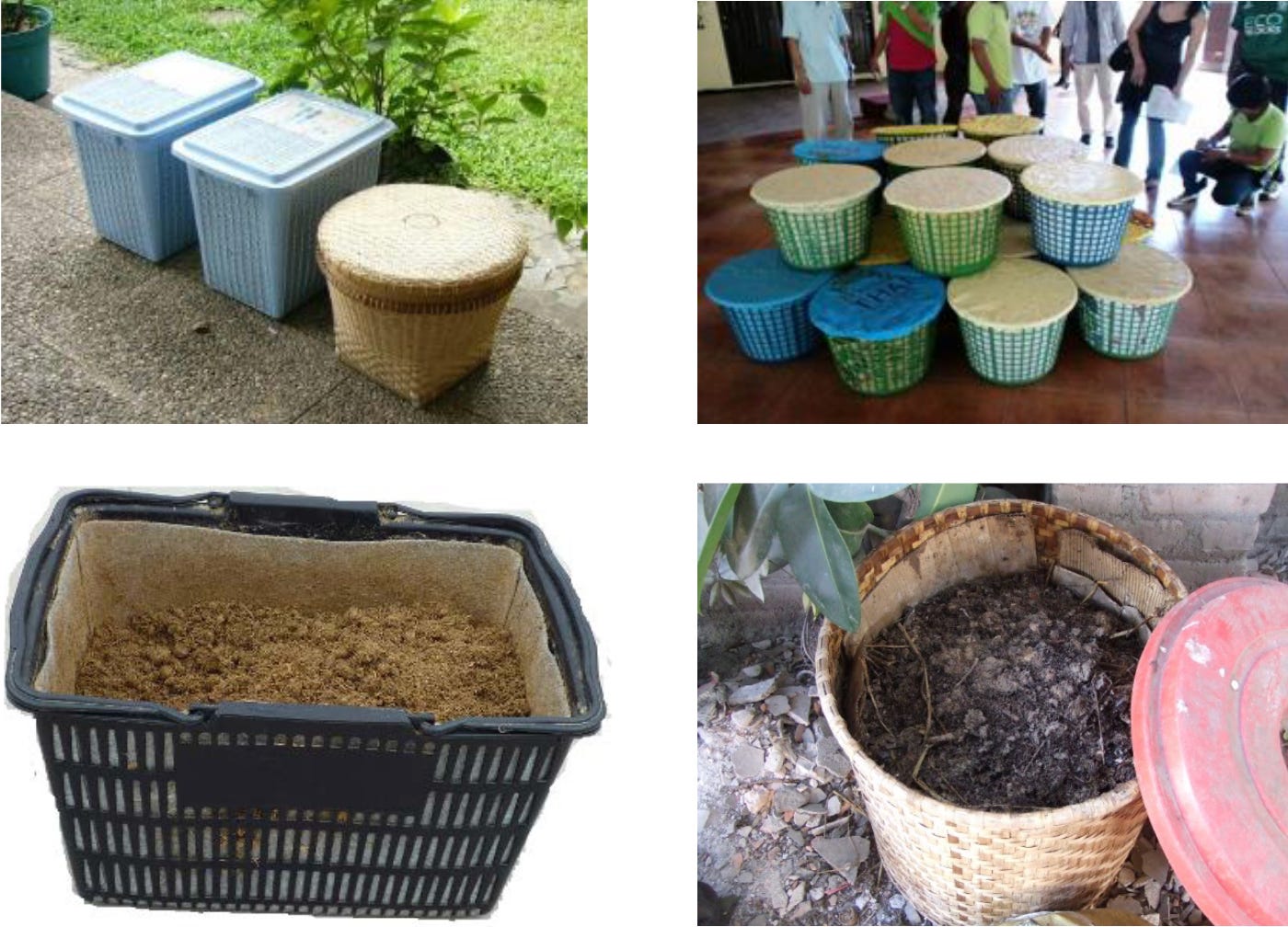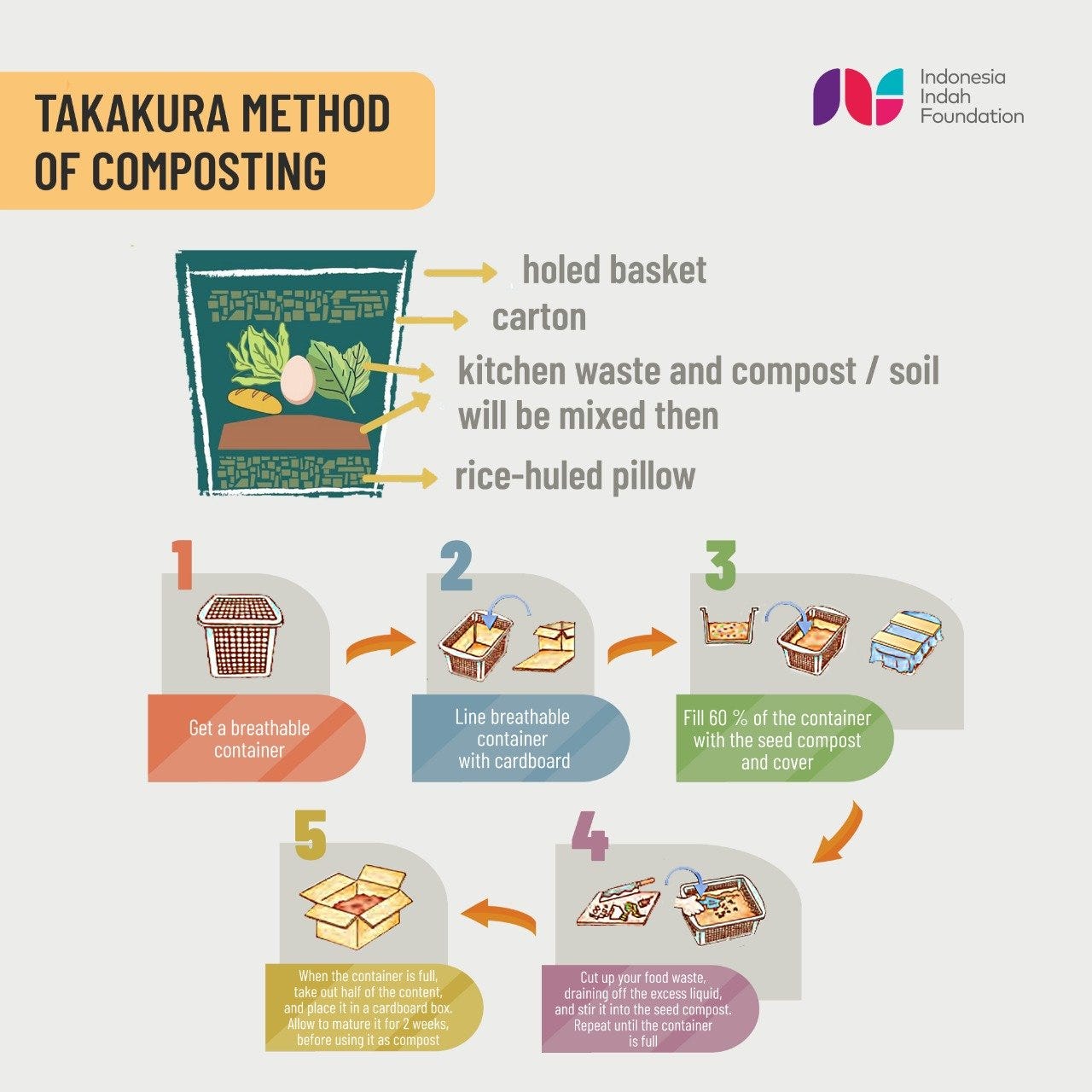Takakura: Composting in small indoor spaces 📦
Transforming food waste into a valuable resource

What is Takakura composting?
Takakura composting is a simple, practical composting method developed by Koji Takakura that uses locally available materials and fermentative microorganisms to rapidly decompose organic waste and household food scraps. It is designed to be odorless, space-efficient, and easy to do in households.

How does it work?
Takakura composting accelerates the breakdown of organic matter by introducing a 'fermenting liquid' or 'seed compost' rich in beneficial microorganisms.
You'll need:
A basket or bin with good ventilation
A cover for the basket (anything that closes the basket, like cardboard)
A spoon or stick for stirring
Dry materials: dried leaves, rice husks, coconut coir, newspaper, scrap paper, shredded egg cartons, or similar materials to balance moisture
Fermenting liquid/seed compost (see below on how to make this)
Step-by-step guide
Make the fermenting liquid.
Method 1: Fermented food + sugar water Mix some locally made fermented foods (e.g., yogurt, kefir, tempeh, kombucha, sauerkraut, kimchi, etc.) with sugar water. The concentration of sugar should be enough for the water to be sweet to the taste. Close the lid and 'burp' the container every day to let the gas out. After 3 to 5 days, the fermentative bacteria has reproduced amply and the liquid should smell sweet-and-sour. If the liquid smells bad or rotten, start again.
Method 2: Vegetables/Fruits + salt water In countries without fermented foods, fermentative microorganisms (lactic acid bacteria and yeasts) can be found on the surface of fruits and vegetables. Locally grown organic fruit should be used for this. Any leaf or fruiting vegetable (not root vegetables) may be used. Mix salt with water; the water should be 1-2% salted. Add in the leaves and skins from vegetables and fruit. Close the lid and 'burp' the container every day to let the gas out. After 3 to 5 days, the mixture should smell slightly sour, like pickle. Once it smells like alcohol, the process is complete.
Line a basket with carton or cardboard on the bottom and the sides.
Add in some dry material at the bottom of the basket.
Chop up your kitchen waste.
Mix your fermenting liquid with new kitchen waste and dry materials (like dried leaves, rice hulls, egg cartons, or newspaper) in the basket. You can also add a handful of garden soil or compost from a previous batch of Takakura compost.
Mix and monitor the basket daily to ensure proper aeration and moisture levels, which helps maintain aerobic conditions and prevent odors.
The compost matures within a few weeks to a month, depending on whether activators (like EM4 or local microorganisms) are used.
3 simple steps clearly explained:
Explainer of how the Takakura method works:
What to look out for
Smells: If your Takakura is smelling foul, it may be too wet and not regularly stirred. Add in more dry materials and mix regularly (at least once a day).
Finished product: The finished compost should be dark, crumbly, and smell likes soil after a heavy rain.
What to add: Technically, you could add any kind of food waste to your Takakura basket but make sure you chop everything up as much as possible. As you try it out yourself, you may prefer to not add in harder-to-digest food stuffs like bones or avocado seeds if they take too long to compost and create foul smells.
Additional resources
This blog has very helpful tips and lessons.
Here's a cool study done on using Takakura to compost seafood waste.




